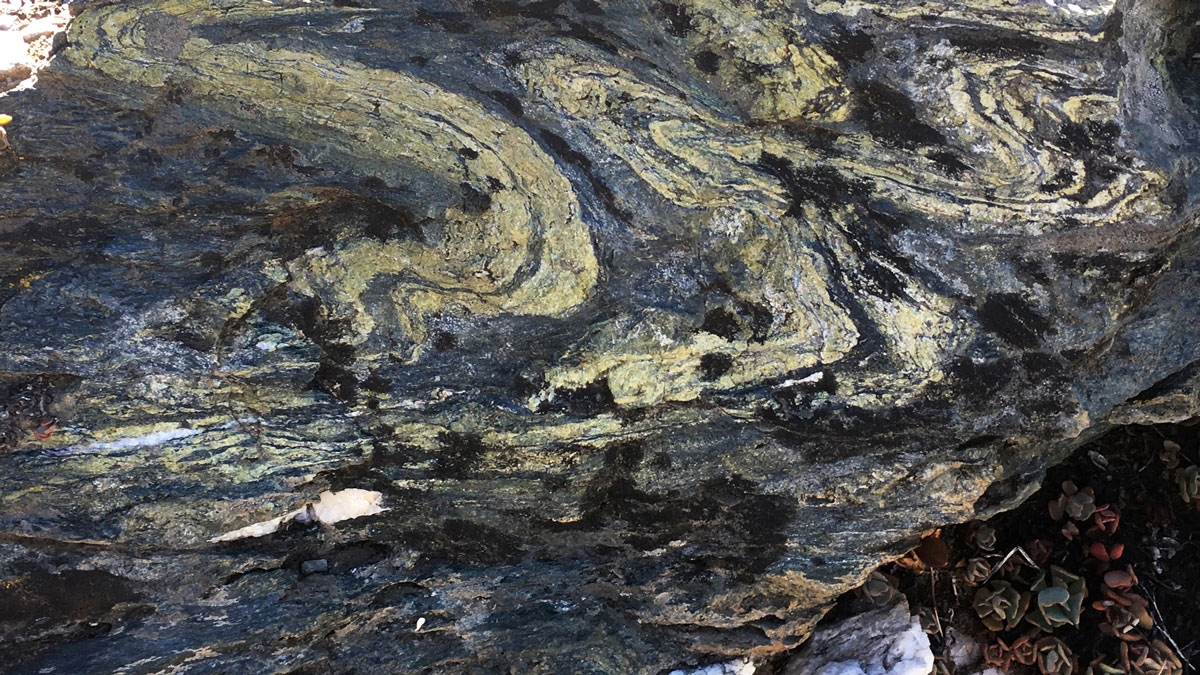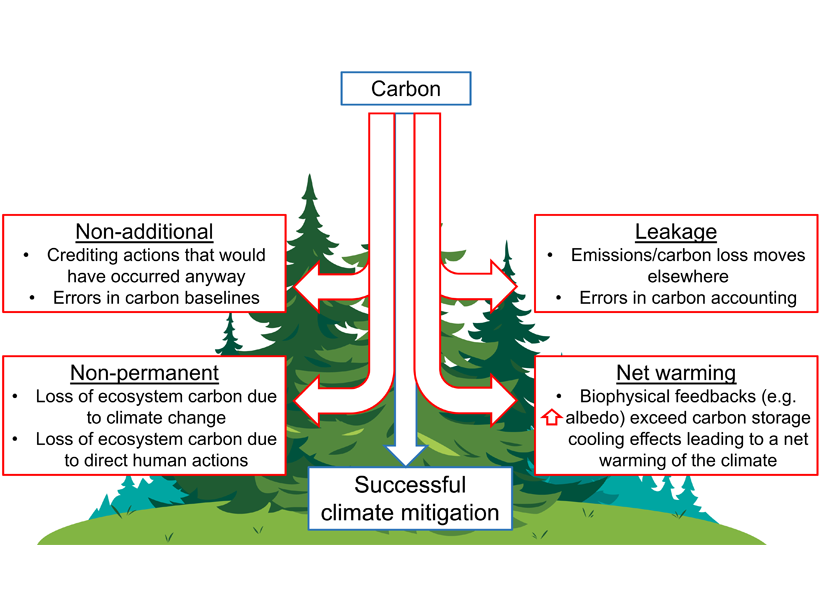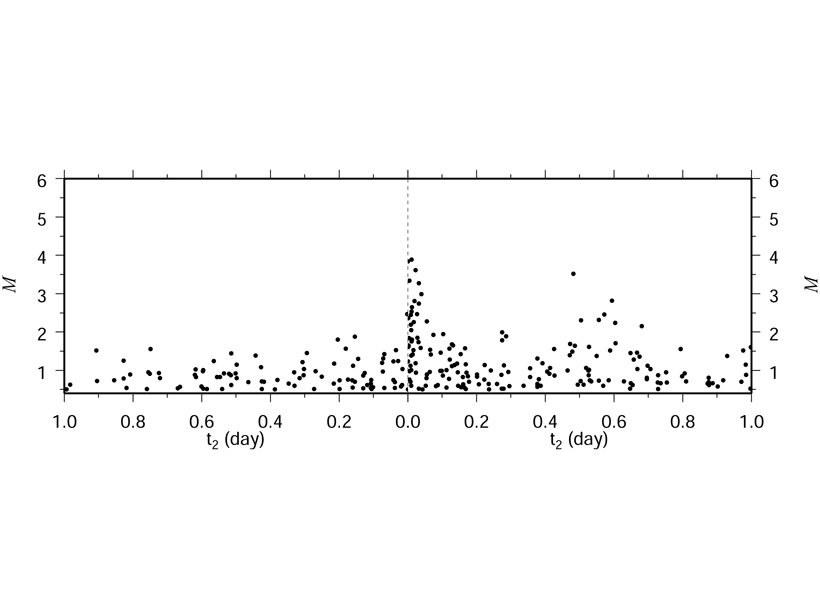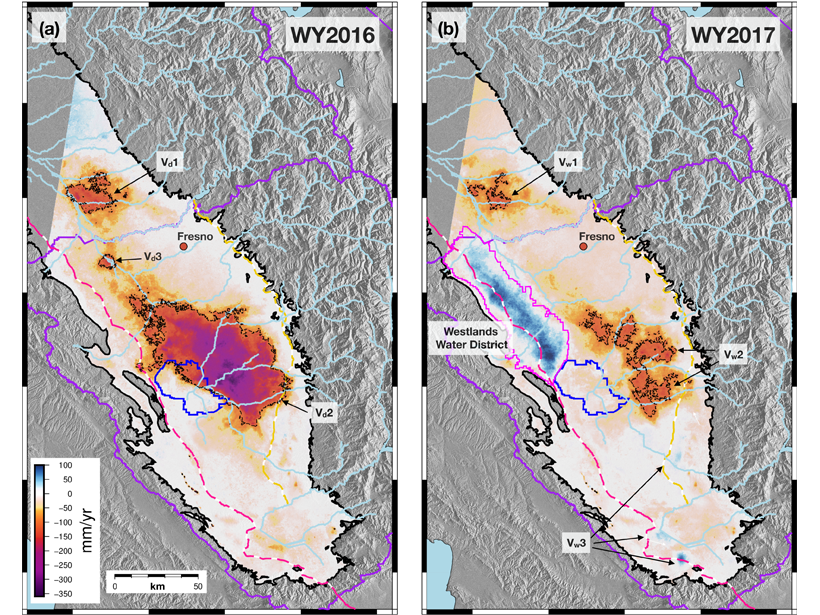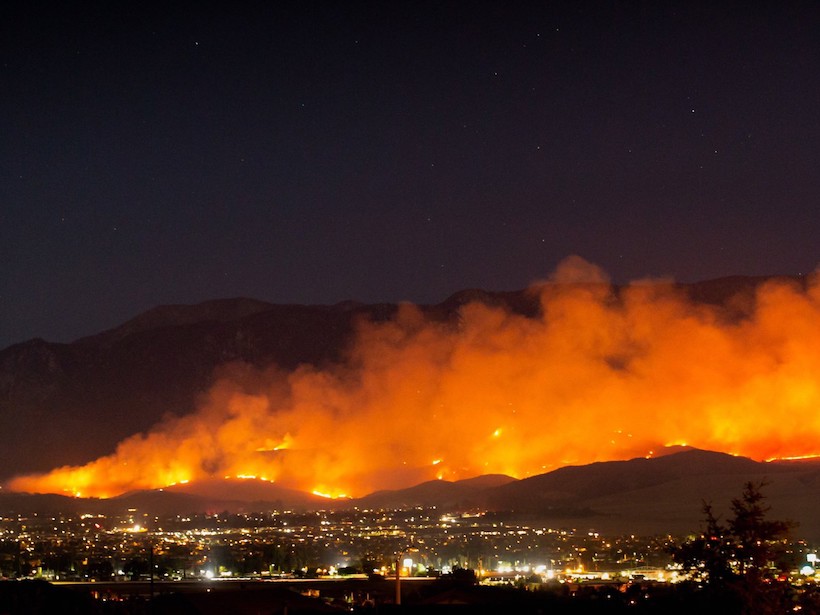Researchers look to the fossil rock record to unearth the driving forces for variable seismic speed through subduction zones.
California
The Changing Climate’s Snowball Effect
Shrinking snowpack, thawing permafrost, and shifting precipitation patterns have widespread consequences. Can new technologies—and public policies—help communities adapt?
Permanence of Nature-Based Climate Solutions at Risk
Conserving native ecosystems helps sequester carbon and mitigate climate change, but new statistical modeling questions the permanence of California’s carbon-rich forests with climate change.
Better Subseasonal-to-Seasonal Forecasts for Water Management
Emerging methods that improve precipitation forecasting over weeks to months could support more informed resource management and increase lead times for responding to droughts and floods.
Earthquake Rates Enhanced by Triggered Creep
Analysis of California earthquakes solidifies links between shaking due to remote earthquakes and increased local earthquake activity that persists for times longer than for regular aftershocks.
Satellites Detect Groundwater Recharge for San Joaquin Valley
A new study integrates spaceborne InSAR time series and GPS to resolve spatiotemporal patterns of deformation across the San Joaquin Valley indicating recharge areas and pathways for groundwater flow.
Thickness and Strength of Slow-moving Landslides Revealed
Hundreds of slow-moving landslides’ deformation patterns were inverted to obtain their thickness and frictional strength, revealing that larger landslides are weaker and thinner than smaller ones.
Why Trillions of Jellyfish Washed Ashore from Canada to California
Although warming oceans may make population booms and mass strandings more common, the species may ultimately be one of the beneficiaries of climate change.
Uncovering Patterns in California’s Blazing Wildfires
A study of trends in wildfire occurrence over the past 30 years shows that environmental, climatic, and human-related factors can point out regions with high fire probabilities.
Weighing Inputs of Waves and Precipitation to Coastal Erosion
Conducting weekly lidar surveys of coastal cliffs for 3 years enabled a California team of coastal erosion researchers to quantify and separate marine effects from subaerial effects.

